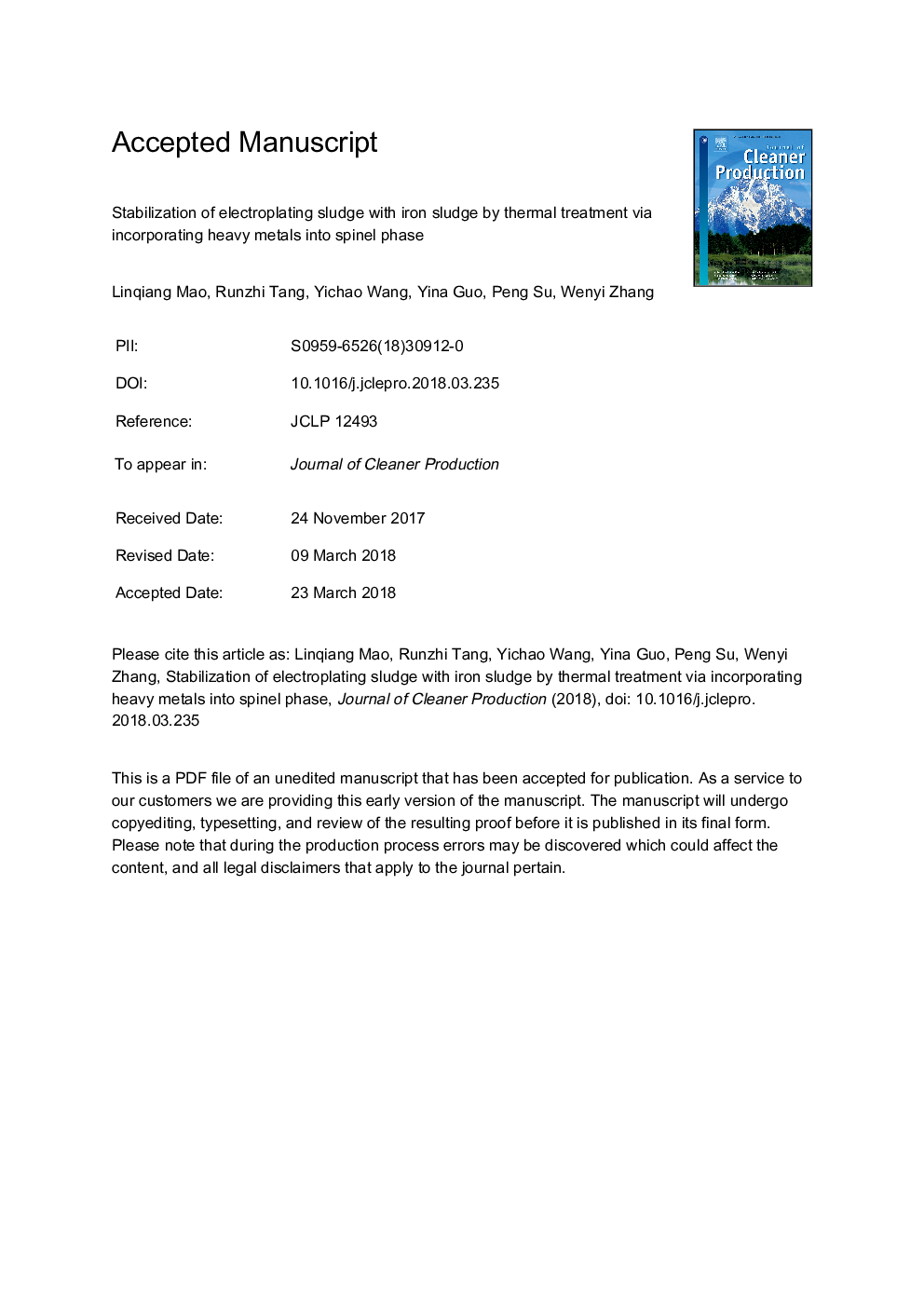| Article ID | Journal | Published Year | Pages | File Type |
|---|---|---|---|---|
| 8095953 | Journal of Cleaner Production | 2018 | 33 Pages |
Abstract
The rapid development of electroplating industries has produced a noticeable amount of electroplating sludge, which may pose serious threat to human health, and required special treatment prior to landfilling. This study developed a novel waste control by waste method for immobilizing electroplating sludge with iron sludge by thermal treatment. Electroplating sludge can be immobilized effectively with iron sludge by transforming heavy metals into spinel structure. Most of heavy metals (Cr, Cu and Zn) would be incorporated in spinel structure when the sintering temperature over 900â¯Â°C. The formed spinel crystal was a heterogeneous spinel solid solution, involved ZnCr2O4, ZnFe2O4, CuFe2O4 and CuCr2O4, and their growth rates are as follow: ZnCr2O4>CuFe2O4>ZnFe2O4>CuCr2O4. ZnCr2O4 would first nucleated and centralized in the central core of the spinel crystal, because its formation is thermodynamically preferable and growth rate is fastest. A prolonged leaching test was carried out to test the leaching risk of heavy metals from the sintered products. The leaching concentrations of heavy metals were below the regulatory limit when the sintering temperature over 1,000â¯Â°C. The overall results suggested that it is a promising and reliable strategy to use iron sludge in immobilizing electroplating sludge through incorporating heavy metals into spinel phase. This study also provided a high value-added and sustainable way toward the management of iron-rich waste.
Related Topics
Physical Sciences and Engineering
Energy
Renewable Energy, Sustainability and the Environment
Authors
Linqiang Mao, Runzhi Tang, Yichao Wang, Yina Guo, Peng Su, Wenyi Zhang,
